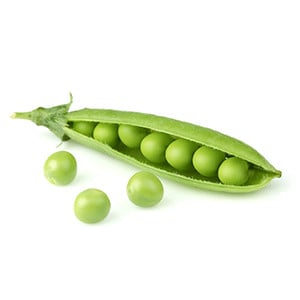Pea

Pea
Pisum sativum
Plant family
Legumes (Fabaceae)
Season Overview
Sowing
Harvest
J
F
M
A
M
J
J
A
S
O
N
D
Details
Light requirement
Sunny
Water requirement
Wet
Soil
Light (sandy)
Nutrient requirement
Low
Plant distance
5 cm
Row spacing
30 cm
Seeding depth
3 cm
Instructions
The season for this plant is over. The following instructions are for the next season.
Beginning of March
Sowing
Mid of March
Tie up
Mid of March
Thinning
Description
The pea is a herbaceous, climbing, annual legume. Peas are divided into three groups of varieties: pal or shelling pea, marrow pea and sugar snap pea. Pal peas are suitable for drying and storage, as they contain more starch than sweet peas and sugar snap peas. Pith peas are only eaten fresh. Sugar snap peas have a softer pod. Therefore, in their young stage, the whole fruits can be consumed. Since peas belong to the legumes, they can go into symbiosis with nitrogen-fixing bacteria and are therefore a good preculture for crops requiring nutrients.
Origin:
Middle East
Growing tips
The time of sowing differs depending on the variety. In general, early sowing is preferable, as diseases can occur more often with later sowing. Preplanting about 2 weeks before planting date is also possible, but not urgently necessary. Peas require a trellis, trellises are best for this purpose. They are also good as a precrop because they are harvested early. You should keep a cultivation break of 3-5 years with nightshade and other legumes.
Companion Plants
Borage
Broccoli
Brussels sprouts
Cabbage (Cabbage)
Cabbage (Savoy cabbage)
Caraway / Meridian fennel / Persian cumin
Carrots
Cauliflower
Collard greens (Kale)
Collard greens (Tuscan kale / Dinosaur kale / Palm tree kale)
Common marigold
Corn / Maize
Cucumber / Gherkin
Dill
Fennel
Florence fennel / Finocchio
Kohlrabi / German turnip / Turnip cabbage
Lentils
Lettuce (Lettuce)
Lettuce (Radicchio / Italian chicory)
Melissa
Napa cabbage / Chinese cabbage
Nasturtium
Okra
Oregano
Pak Choi
Pumpkin / Squash
Radish
Radishes
Rhubarb
Root parsley
Rutabaga / Swedish turnip
Sage
Spinach (Summer)
Sunflower
Tarragon
Turnip
Antagonistic Plants
Diseases
Rust of pea
Powdery mildews
Pests
Pea weevils
Olive Brown Pea Moth